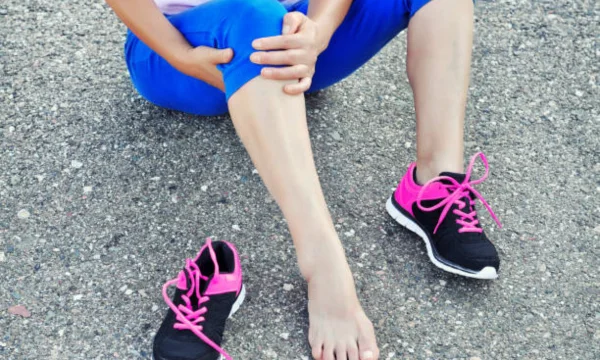Running is an excellent way to stay fit, but heel pain can quickly halt your progress, turning every step into a challenge. Thankfully, you don’t have to let pain sideline your running goals. Whether it’s a nagging ache or a sharp sting, addressing heel pain properly can put you back on track. Our guide dives into effective solutions, from simple adjustments to your routine to targeted exercises, ensuring your heels stay healthy.
Get ready to lace up your sneakers with confidence, and let’s tackle heel pain head-on. Your running journey doesn’t have to be painful. Let’s discover how to stride pain-free.
How to Fix Heel Pain from Running

Heel pain often stems from overuse injuries, affecting runners of all levels. Before diving into solutions, it’s crucial to understand the common causes, such as plantar fasciitis and Achilles tendinitis.
Common Causes of Heel Pain
- Plantar Fasciitis: Inflammation of the plantar fascia, a thick band of tissue that runs across the bottom of your foot, connecting your heel bone to your toes.
- Achilles Tendinitis: Inflammation of the Achilles tendon, the large tendon that connects your calf muscles to your heel.
Prevention Strategies
Proper Footwear
Selecting the right footwear is crucial. Ensure your running shoes provide adequate support and fit your foot type. Shoes with good arch support and cushioning can prevent heel pain.
Warm-Up and Stretch
Warming up before running and stretching after can significantly reduce the risk of heel pain. Focus on stretches that target the Achilles tendon and the plantar fascia.
Treatment Options
Rest and Recovery
When experiencing heel pain, the first step should be to rest. Giving your body time to heal is crucial. Avoid activities that exacerbate the pain.
Ice Therapy
Applying ice to the affected area can help reduce inflammation and pain. Use an ice pack wrapped in a towel for 15-20 minutes, several times a day.
Over-the-Counter Medications
Nonsteroidal anti-inflammatory drugs (NSAIDs) like ibuprofen can help reduce pain and inflammation. However, they should be used cautiously and for a short duration.
Physical Therapy
A physical therapist can teach you exercises to strengthen the muscles around your heel, improve flexibility, and reduce pain.
Orthotic Devices
Custom orthotics or over-the-counter arch supports can help distribute pressure more evenly across your feet, relieving heel pain.
When to See a Doctor
If your heel pain persists despite home treatment, it’s essential to consult a healthcare professional. They can offer advanced treatments such as corticosteroid injections, shock wave therapy, or, in rare cases, surgery.
Lifestyle Adjustments
Gradual Increase in Activity
Gradually increasing your running distance and intensity can help prevent heel pain. Follow the 10% rule, increasing your running distance by no more than 10% per week.
Cross-Training
Incorporate low-impact exercises like swimming or cycling into your routine. This can help maintain your fitness while giving your heels time to recover.
Maintain a Healthy Weight
Extra weight puts additional pressure on your heels. Maintaining a healthy weight can reduce the strain on your feet and prevent heel pain.
Conclusion
Heel pain from running can be frustrating, but with the right approach, it’s manageable. By understanding the causes, implementing prevention strategies, and exploring treatment options, you can continue to enjoy running pain-free. Remember, if your heel pain persists, seeking professional medical advice is crucial to prevent further injury.

